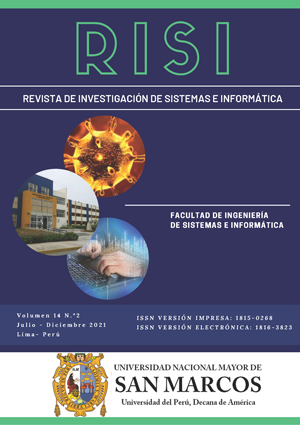Framework for automating the layout of web pages applying natural language processing
DOI:
https://doi.org/10.15381/risi.v14i2.23148Keywords:
Web page design, User interfaces, Natural language processing, Automatic speech recognition, Human computer interactionAbstract
Web layout is constantly evolving and new professionals in the field are joining each time. However, the development tools and environments seem to have lagged behind the traditional: simple use of the keyboard to code and little motivation and innovation in the use of other means of coding, such as voice, to improve and expand its use. For this reason, a modern and innovative web framework has been developed that applies natural language processing theory to automate web layout through the use of CSS 3 and speech recognition technologies. The framework has been validated through the application of a questionnaire made up of 6 dimensions and 31 indicators valued from 1 to 5 according to the Likert scale and to obtain the results, the statistical technique called correlation measures has been used. The results show that the framework improves by: 38.59% the web layout in general, 41.46% the layout of the animations, 39.22% the layout of the buttons, 32.33% the layout of the content, 39.94% the layout of the background, 41.04% the layout of the images and 39.28% the layout of the typography.
Downloads
Downloads
Published
Issue
Section
License
Copyright (c) 2022 Julio Prudencio-Nieves

This work is licensed under a Creative Commons Attribution 4.0 International License.
AUTHORS RETAIN THEIR RIGHTS:
a. Authors retain their trade mark rights and patent, and also on any process or procedure described in the article.
b. Authors retain their right to share, copy, distribute, perform and publicly communicate their article (eg, to place their article in an institutional repository or publish it in a book), with an acknowledgment of its initial publication in the Revista de investigación de Sistemas e Informática.
c. Authors retain theirs right to make a subsequent publication of their work, to use the article or any part thereof (eg a compilation of his papers, lecture notes, thesis, or a book), always indicating its initial publication in the Revista de investigación de Sistemas e Informática (the originator of the work, journal, volume, number and date).


